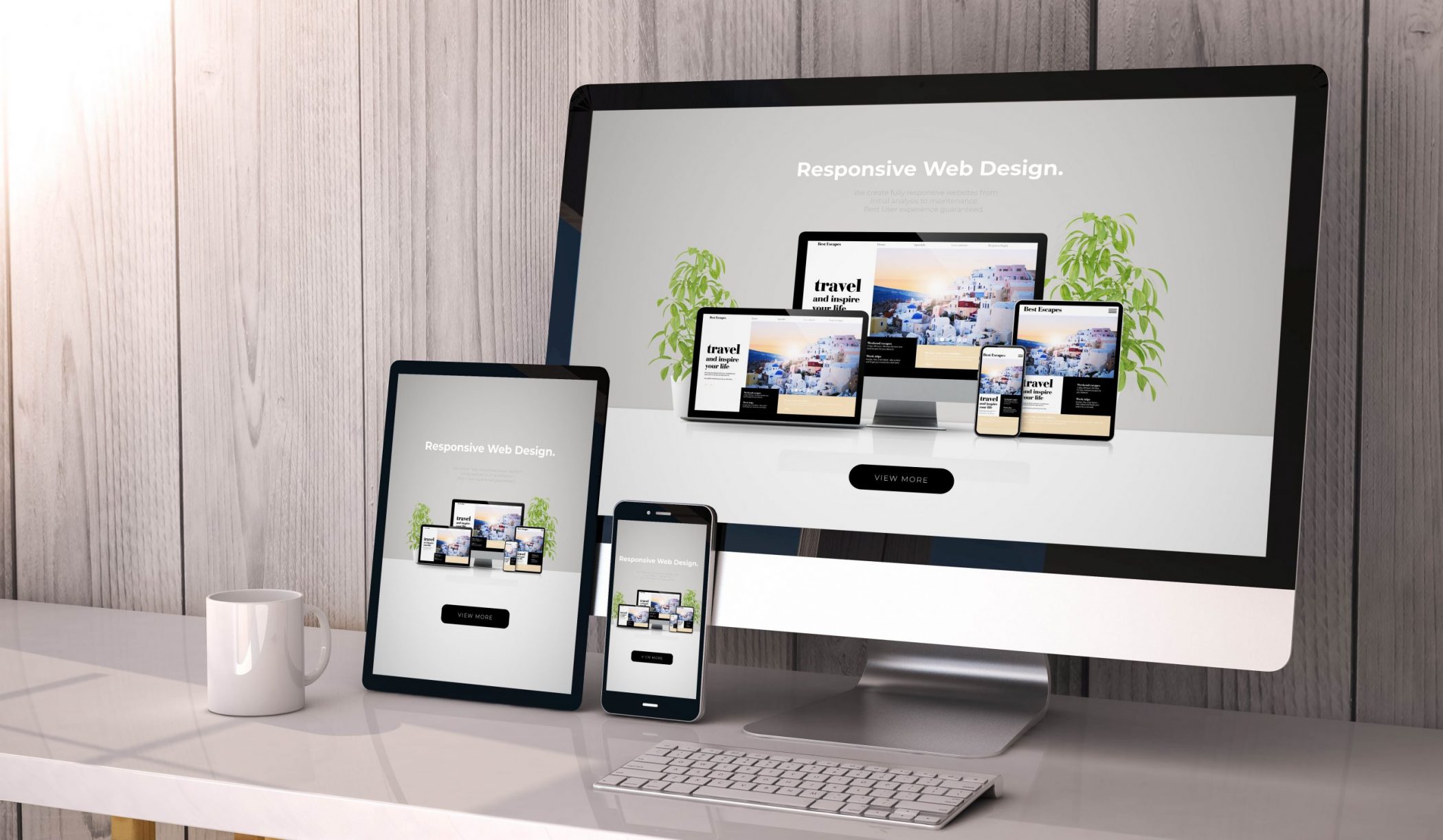How Reliable Web Design Can Boost Customer Experience and Conversions
In the increasingly competitive digital landscape, reliable internet design plays a crucial duty in enhancing user experience and driving conversions. As we discover the essential elements that contribute to successful web layout, it comes to be noticeable that the effect on customer fulfillment and conversion rates is extensive.
Relevance of User-Centric Layout
In the realm of web style, focusing on user-centric layout is critical for creating efficient electronic experiences. This approach concentrates on recognizing the needs, choices, and actions of users, ensuring that electronic user interfaces are intuitive and accessible (Web design). By incorporating customer responses right into the style procedure, web designers can craft experiences that resonate with their target audience, ultimately bring about increased engagement and fulfillment
User-centric style highlights use, which is important for keeping users and lessening bounce prices. When users can browse a web site easily, they are more probable to discover its web content and convert into customers. A user-centered approach cultivates depend on and reliability, as individuals really feel that their needs are valued and attended to. This not only improves their experience but additionally motivates brand name commitment.

Secret Elements of Effective Format
Efficient design acts as the backbone of user-centric website design, equating user requires into visual structures that promote communication. A well-organized design prioritizes content through a clear hierarchy, leading customers' eyes to important info. This power structure is often established using shade, spacing, and size, guaranteeing that crucial aspects stick out.
An additional secret component is using whitespace, which prevents overcrowding and enhances readability. Web design. Whitespace enables aspects to take a breath, making the general layout appear cleaner and much easier to navigate. Additionally, uniformity in layout aspects, such as colors and fonts, cultivates experience and trust, enabling users to navigate the site with higher simplicity
Grid systems can likewise be invaluable, providing a structure that aligns content logically and aesthetically. This alignment improves the customer experience by developing an organized aesthetic flow. Additionally, adaptability in layout-- like responsive style-- ensures that websites carry out well across different gadgets, accommodating varied individual preferences.
Ultimately, an efficient layout not only mesmerizes individuals however additionally urges them to involve more deeply, eventually satisfying and driving conversions organization objectives. By concentrating on these vital components, designers can create formats that reverberate with customers and boost their overall experience.
Navigational Finest Practices
Instinctive and clear navigating is essential for boosting customer experience on a website. A well-structured navigation system permits users to find info swiftly, which straight influences their contentment and possibility of conversion - Web design. Implementing a hierarchical structure is necessary; utilize groups and subcategories that rationally group relevant web content, making it much easier for site visitors to explore
Uniformity in navigating aspects is additionally vital. Make certain that food selections, buttons, and links maintain uniformity stylishly, shade, and positioning across all useful reference pages, giving customers with an acquainted framework as they browse. In addition, utilize descriptive tags for navigating items. As opposed to generic terms, select clear labels that accurately mirror the material, aiding customers in making educated decisions.

Mobile Responsiveness and Access

Ease of access, on the other hand, concentrates on making internet sites usable for people with handicaps. This includes sticking to guidelines such as the Web Web Content Ease Of Access Standards (WCAG), which resolve issues like shade comparison, text dimension, and key-board navigation. By executing these standards, web developers can create inclusive experiences that cater to a wider audience, consequently enhancing customer involvement and fulfillment.
Furthermore, mobile responsiveness and availability not just boost user experience yet likewise positively impact internet search engine rankings. Internet search engine prioritize obtainable and mobile-friendly websites, making them more most likely to show up in relevant search engine result. Consequently, spending in these aspects of internet style not only fulfills customer needs but additionally contributes to general organization success with raised presence and boosted conversion rates.
Gauging Success With Analytics
Tracking individual communications and see this here behaviors with analytics is necessary for analyzing the success of a website. By leveraging tools such as Google Analytics, services can gather vital data that exposes exactly how customers involve with their website. Metrics such as bounce rates, average session period, and conversion rates offer insights into customer behavior and can highlight locations for enhancement.
Comprehending user demographics and website traffic sources better enhances a site's performance. This information enables web developers to tailor content and layout aspects to much better satisfy the demands of their target audience. In addition, tracking certain user trips aids determine possible bottlenecks in the conversion funnel, allowing services to maximize their website design as necessary.
Consistently reviewing this analytics data is important for continuous enhancement. A/B testing different style aspects can offer concrete evidence of what resonates with customers, enabling notified decisions based on real-world efficiency. Ultimately, measuring success via analytics not only boosts user experience but additionally drives conversions, guaranteeing that internet style efforts straighten with company objectives. In an electronic landscape where competitors is fierce, utilizing the power of analytics is key to keeping a successful and user-friendly website.
Final Thought
In final thought, effective web design plays an essential role in enhancing user experience and driving conversions. Eventually, measuring success through analytics allows for constant renovation, making sure that layout techniques continue to be aligned with individual demands, thereby cultivating organization growth and success.
In the increasingly competitive electronic landscape, reliable web design plays a crucial duty in boosting customer experience and driving conversions. By integrating user comments right into the layout procedure, internet this page designers can craft experiences that reverberate with their target audience, inevitably leading to increased involvement and contentment.
Eventually, the value of user-centric layout lies in its capacity to create purposeful communications that drive conversions and foster long-term relationships with customers, making it a crucial element of effective internet layout strategies.
Eventually, measuring success through analytics not just improves user experience but likewise drives conversions, ensuring that web layout initiatives straighten with organization goals.In final thought, reliable internet layout plays a pivotal duty in enhancing customer experience and driving conversions.
Comments on “Key Elements to Consider When Crafting an Effective Web Design Strategy”